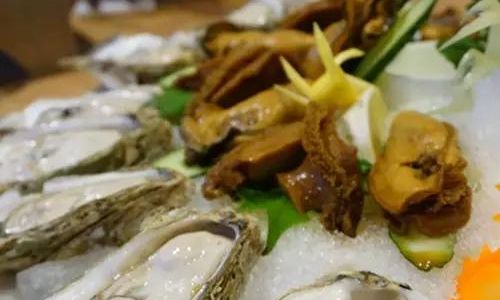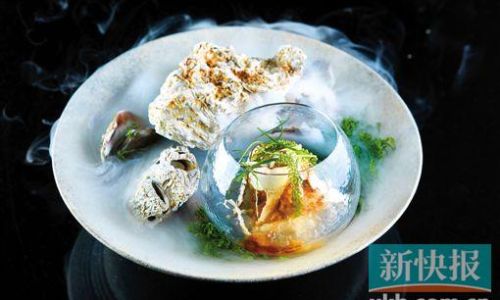Introduction
Oysters, often dubbed the “jewels of the sea,” are celebrated worldwide for their briny sweetness and versatile culinary applications. While fresh oysters are a delicacy, frozen varieties offer convenience and accessibility, allowing home cooks and professional chefs alike to enjoy these mollusks year-round. However, cooking frozen oysters requires a nuanced approach to preserve their texture and flavor. This guide delves into the intricacies of selecting, preparing, and cooking frozen oysters, exploring techniques from grilling to baking, and even transforming them into gourmet dishes. Whether you’re a novice in the kitchen or a seasoned cook, this article will equip you with the knowledge to elevate frozen oysters into a memorable meal.
Understanding Frozen Oysters: Selection and Storage
Before diving into cooking methods, it’s crucial to grasp the basics of frozen oyster selection and storage. Not all frozen oysters are created equal—quality begins at the source.
1 Choosing the Right Frozen Oysters

- Species and Origin: Oysters vary by species (e.g., Pacific, Kumamoto, Atlantic) and region, each offering distinct flavor profiles. Pacific oysters, for instance, are often larger and milder, while Kumamotos boast a creamy, buttery taste.
- Packaging: Look for oysters labeled “IQF” (Individually Quick Frozen), which prevents clumping and allows for easy portioning. Avoid packages with excess ice crystals, as this may indicate freezer burn or improper storage.
- Sustainability: Opt for brands that prioritize sustainable harvesting practices, ensuring the longevity of oyster populations.
2 Proper Storage Techniques
- Freezer Temperature: Maintain a freezer temperature of 0°F (-18°C) or below to preserve oyster quality.
- Shelf Life: Frozen oysters typically last 3–6 months when stored correctly. Beyond this, they may develop off-flavors or textural issues.
- Thawing: Never thaw oysters at room temperature. Instead, use one of two methods:
- Refrigerator Thawing: Transfer oysters to a sealed container and thaw overnight in the fridge.
- Cold Water Thawing: Submerge the sealed package in cold water, changing the water every 30 minutes until thawed (1–2 hours).
Essential Tools and Ingredients
Cooking frozen oysters doesn’t demand specialized equipment, but having the right tools streamlines the process.
1 Kitchen Equipment
- Oyster Knife: A sturdy, short-bladed knife with a thick handle for shucking.
- Glove or Towel: To protect your hand while shucking.
- Grill or Oven: For high-heat cooking methods.
- Cast Iron Skillet or Frying Pan: Ideal for searing or pan-frying.
- Baking Sheet: For roasting or broiling.
- Steamer Basket: For gentle, moisture-rich cooking.
2 Pantry Staples
- Fats: Butter, olive oil, or bacon fat for sautéing or roasting.
- Aromatics: Garlic, shallots, fresh herbs (parsley, thyme, chives).
- Acids: Lemon juice, vinegar, or wine to balance brininess.
- Spices: Paprika, cayenne, black pepper, or Old Bay seasoning.
- Breadcrumbs: Panko or regular for crispy toppings.
Preparation: Thawing, Cleaning, and Shucking
Proper preparation is the cornerstone of successful frozen oyster cooking.
1 Thawing: The First Critical Step
As mentioned earlier, thaw oysters slowly in the refrigerator or via cold water. Avoid microwave thawing, which can partially cook the oysters and ruin their texture.
2 Cleaning Frozen Oysters
- Rinse Thoroughly: After thawing, rinse oysters under cold running water to remove any ice crystals or debris.
- Inspect for Shell Fragments: Gently tap each oyster; a hollow sound indicates a closed shell, while a dull thud may mean the oyster is dead or spoiled (discard these).
3 Shucking 101
While some recipes call for cooking oysters in their shells, others require shucking. Here’s how:
- Grip the Oyster: Hold it cup-side down on a towel-lined surface to stabilize it.
- Insert the Knife: Wedge the oyster knife into the hinge (the narrow end) and twist to pry the shells apart.
- Cut the Muscle: Slide the knife along the top shell to sever the adductor muscle, then repeat on the bottom shell.
- Discard the Top Shell: Retain the oyster in its deeper half-shell, ensuring no shell fragments remain.
Cooking Methods: From Grill to Skillet
Frozen oysters lend themselves to diverse cooking techniques. Experiment to find your favorite.
1 Grilled Oysters: Smoky and Charred
Grilling imparts a smoky depth while caramelizing the oysters’ natural sugars.
- Preheat the Grill: Aim for medium-high heat (375–450°F or 190–230°C).
- Prepare the Oysters: Shuck oysters, leaving them in their half-shells.
- Add Toppings (Optional):
- Garlic Butter: Melt butter with minced garlic and herbs.
- Cheese: Sprinkle with Parmesan or Gruyère.
- Bacon: Top with crispy bacon bits.
- Grill: Place oysters on the grate and cook for 4–6 minutes until the edges curl. The liquid should bubble but not evaporate completely.
2 Baked Oysters: Creamy and Indulgent
Baking allows for endless flavor combinations, from classic Rockefeller to spicy Cajun.
- Preheat the Oven: 425°F (220°C).
- Prepare the Oysters: Shuck and place on a baking sheet.
- Toppings:
- Rockefeller Style: Spinach, Pernod, Parmesan, and breadcrumbs.
- Buffalo Style: Hot sauce, blue cheese crumbles, and celery.
- Bake: Cook for 10–12 minutes until golden and bubbling.
3 Pan-Fried Oysters: Crispy and Golden
Pan-frying creates a crunchy exterior while keeping the oyster tender.
- Batter Options:
- Tempura: Mix flour, cornstarch, and ice-cold sparkling water.
- Cornmeal: Dredge in seasoned cornmeal for a Southern twist.
- Cook: Heat oil in a skillet to 350°F (175°C). Fry oysters for 2–3 minutes per side until golden.
4 Steamed Oysters: Delicate and Moist
Steaming is ideal for preserving the oyster’s briny essence.
- Prepare a Steamer: Use a pot with a steamer basket and 1 inch of boiling water.
- Add Flavorings: Toss in lemon slices, bay leaves, or peppercorns.
- Steam: Cover and cook for 5–7 minutes until shells open. Discard any unopened oysters.
5 Raw Preparation: For the Adventurous
While risky with frozen oysters, some sushi-grade varieties can be enjoyed raw.

- Thaw Carefully: Follow refrigerator thawing to avoid bacterial growth.
- Serve: On ice with mignonette sauce (sherry vinegar, shallots, pepper) or lemon wedges.
Sauces and Accompaniments: Elevating the Oyster Experience
A well-crafted sauce can transform oysters into a gourmet dish.
1 Classic Sauces
- Mignonette: Combine ¼ cup sherry vinegar, 1 tbsp minced shallot, and 1 tsp black pepper.
- Cocktail Sauce: Mix ketchup, horseradish, lemon juice, and Worcestershire sauce.
- Garlic Butter: Sauté minced garlic in butter with parsley and lemon zest.
2 Creative Twists
- Sriracha Lime: Sriracha, lime juice, honey, and cilantro.
- Herb Butter: Softened butter mixed with tarragon, chives, and dill.
- Ponzu: Japanese citrus soy sauce with yuzu and bonito flakes.
Serving Suggestions and Pairings
Oysters shine when paired with complementary flavors and beverages.
1 Garnishes and Sides
- Lemon Wedges: A classic brightener.
- Grilled Bread: Rub with garlic and olive oil.
- Coleslaw: Crisp, tangy slaw cuts through richness.
- Pickled Vegetables: Quick-pickled onions or radishes.
2 Beverage Pairings
- Wine: Crisp whites like Chablis, Muscadet, or Champagne.
- Beer: Light lagers, wheat beers, or tart goses.
- Cider: Dry, sparkling ciders with apple or pear notes.
Common Mistakes and How to Avoid Them
Even seasoned cooks can stumble. Here’s how to sidestep pitfalls.
1 Overcooking
- Issue: Oysters become rubbery.
- Fix: Cook until edges curl but centers remain plump.
2 Improper Thawing
- Issue: Microwave thawing leads to uneven cooking.
- Fix: Stick to refrigerator or cold water methods.
3 Using Dull Knives
- Issue: Struggling to shuck increases injury risk.
- Fix: Invest in a sharp oyster knife and practice on a towel-lined surface.
4 Skipping Seasoning
- Issue: Bland oysters.
- Fix: Always add a pinch of salt, pepper, or acid.
Conclusion: The Joy of Frozen Oysters
Frozen oysters are a testament to culinary adaptability, offering a gateway to gourmet experiences without the pressure of freshness windows. By mastering thawing techniques, experimenting with cooking methods, and pairing with bold flavors, you can turn a humble frozen pack into a restaurant-worthy dish. Whether grilled over flames, baked with cheese, or fried to crispy perfection, oysters reward curiosity and effort. So next time you spot a bag of frozen oysters, seize the opportunity—your taste buds will thank you.
Final Thoughts
Cooking frozen oysters is an art that balances technique with creativity. As you gain confidence, explore hybrid methods: grill oysters halfway, then top with cheese and finish in the oven. Or, fold pan-fried oysters into a creamy pasta sauce. The possibilities are as vast as the ocean itself. Bon appétit!





0 comments